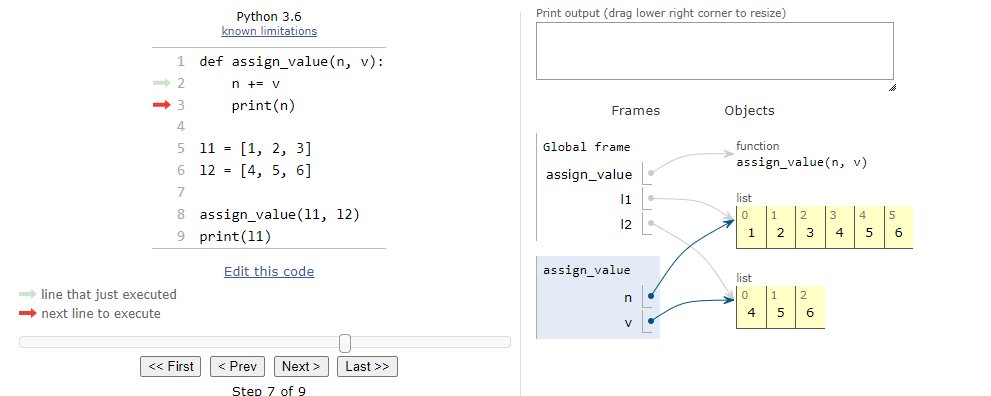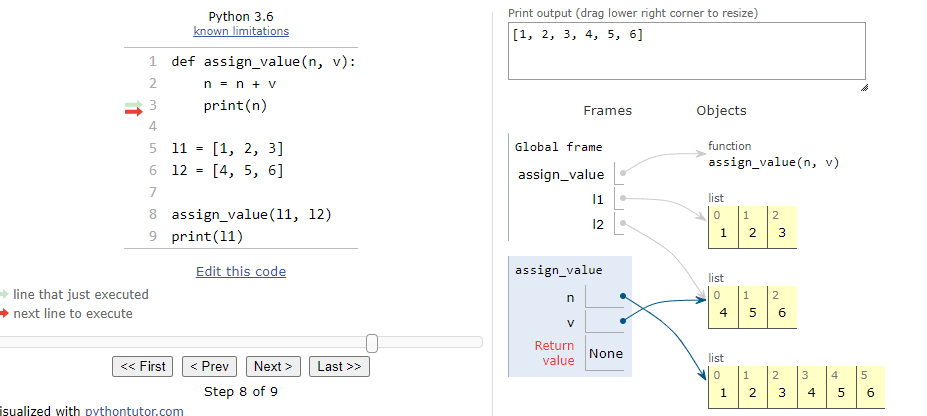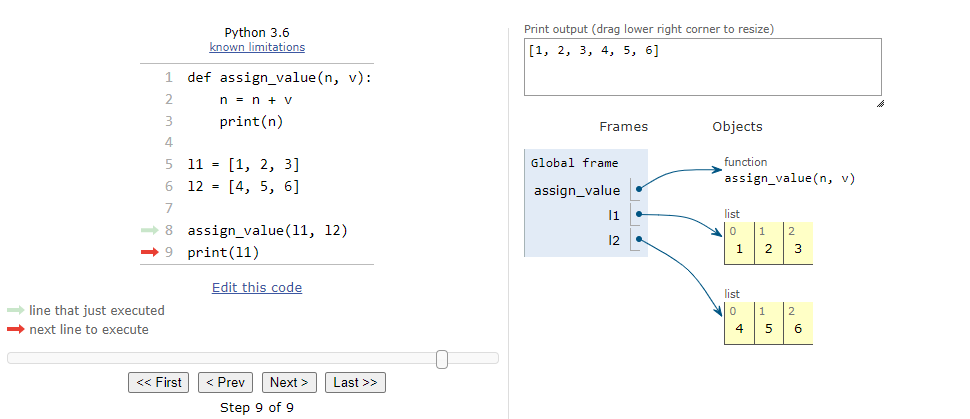I had learned that n = n + v and n += v are the same. Until this;
def assign_value(n, v):
n += v
print(n)
l1 = [1, 2, 3]
l2 = [4, 5, 6]
assign_value(l1, l2)
print(l1)
The output will be:
[1, 2, 3, 4, 5, 6]
[1, 2, 3, 4, 5, 6]
Now when I use the expanded version:
def assign_value(n, v):
n = n + v
print(n)
l1 = [1, 2, 3]
l2 = [4, 5, 6]
assign_value(l1, l2)
print(l1)
The output will be:
[1, 2, 3, 4, 5, 6]
[1, 2, 3]
Using the += has a different result with the fully expanded operation. What is causing this?




__add__and__iadd__can be implemented independently and differently. – Earlie